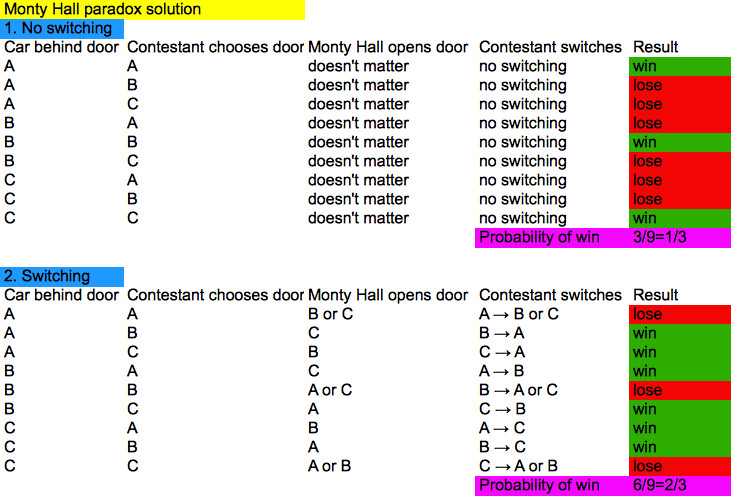A couple of days ago a friend of mine, after having watched «21» film, asked me to explain her the very well known Monty Hall problem (which the film happened to popularise beyond notoriety) in nutshell layman’s terms, for those not acquainted with the theory of probabilities. As it was 2:30 am on the clock and I was in a state of zombie, I have outright despised the very idea of doing so and just pointed her to a Wikipedia page instead, which supposedly explains it all (https://en.wikipedia.org/wiki/Monty_Hall_problem). Only after having a closer look at this wikipage myself, I suddenly realised that not only it fails to explain the matter crystal clear simply, but complicates it beyond any necessity. Not surprisingly, my friend replied me saying she got even more perplexed after reading it. This morning, while having a breakfast and still happy to oblige, I sketched out a simple table (in fact, two of them) that clarifies it once and for all, cut and clear, Occam’s razor sharp. After having initial reluctance for a while, I finally decided to put it here, so at least none of my friends trouble me with this same problem again. Here you go, the simplest possible way of solving Monty Hall paradox.

